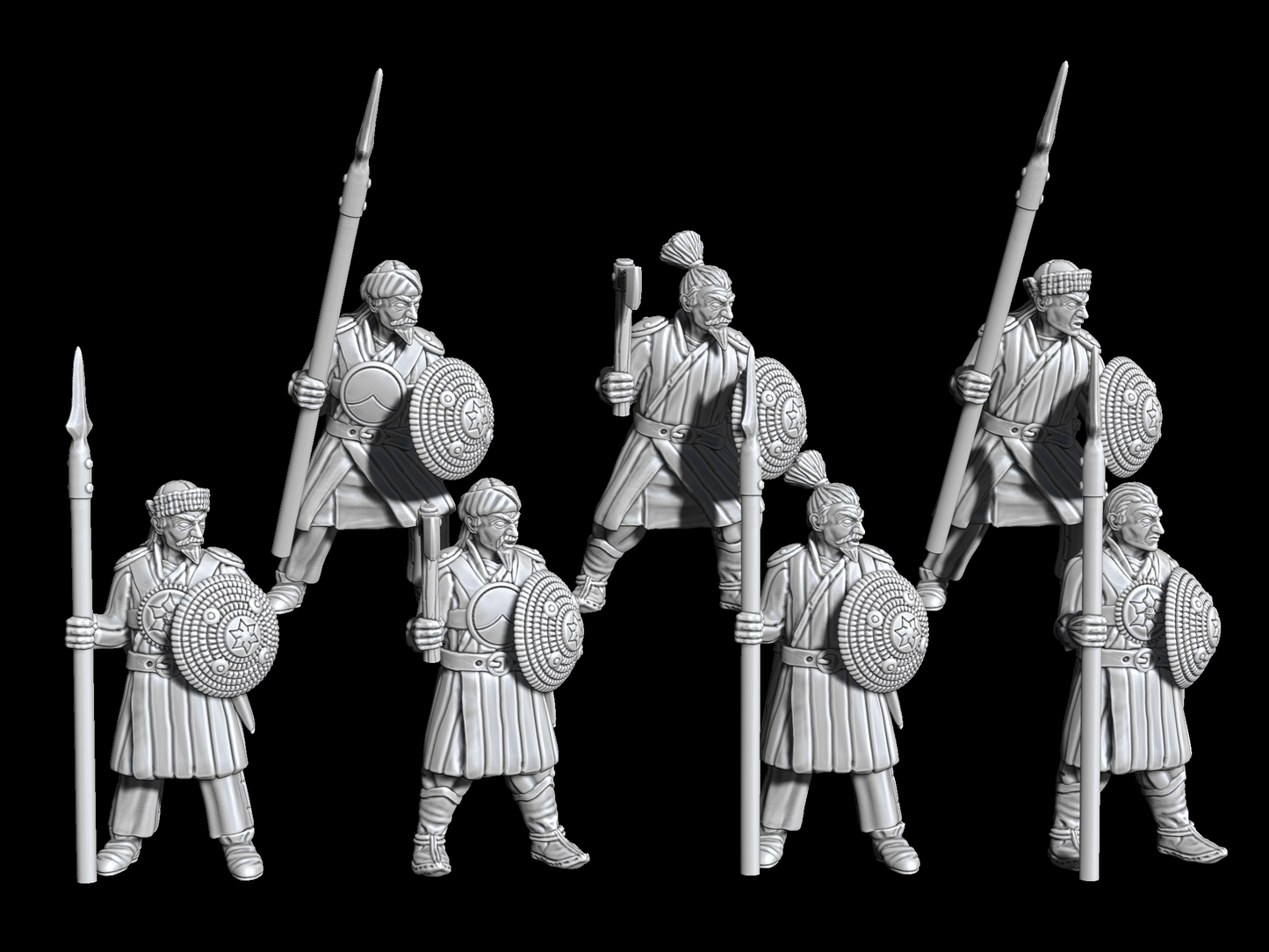Wargames Delivered
Turko-Mongol Light Infantry STLs
Couldn't load pickup availability

These are DIGITAL files meant for 3D printing. They ARE NOT physical miniatures!
Sculpted by the incomparable Erramir Orlan of Peculiar Companions, these Turko-Mongol Light Infantry are intended for armies from the 15th and 16th Centuries. This set of seven 3D models comes in two poses with seven variations, as well as a variety of hand weapon options. All models come as both pre-supported and unsupported STL files.
Historical Context: The 15th and 16th centuries were marked by significant historical events, including the expansion of empires, trade routes, and cultural exchanges. The Turko-Mongol Light Infantry played a vital role during this period of exploration, conquest, and military innovation.
Battles and Wars:
Mongol Conquests (13th-14th centuries): While not directly in the 15th-16th century timeframe, the legacy of Turko-Mongol infantry tactics endured into this period. The Mongols, with their versatile light infantry, conducted extensive conquests in Asia, Europe, and the Middle East during the 13th and 14th centuries.
Ottoman-Habsburg Wars: The Ottoman Empire, which included skilled Turko-Mongol Light Infantry, engaged in a series of conflicts with the Habsburg Monarchy during the 15th and 16th centuries. These infantry units continued to be a valuable asset in Ottoman military tactics.
Tactics and Strategies: Turko-Mongol Light Infantry were renowned for their adaptability and mobility on the battlefield. Their tactics involved:
Archery Skills: They were skilled archers, often equipped with composite bows. This allowed them to engage the enemy from a distance, disrupting enemy formations and causing casualties.
Hit-and-Run Attacks: Turko-Mongol Light Infantry excelled in hit-and-run tactics. They would engage the enemy swiftly, unleash volleys of arrows or javelins, and then retreat before the enemy could effectively respond.
Ambushes and Skirmishes: They were adept at ambushing enemy forces, disrupting supply lines, and engaging in skirmishes to wear down enemy troops.
Printing at 100% resolution will yield a true 28mm miniature. Prints at 105% are slightly more in scale with Perry Miniatures and 110% prints will be in a compatible scale with Warhammer Fantasy miniatures.
Share


